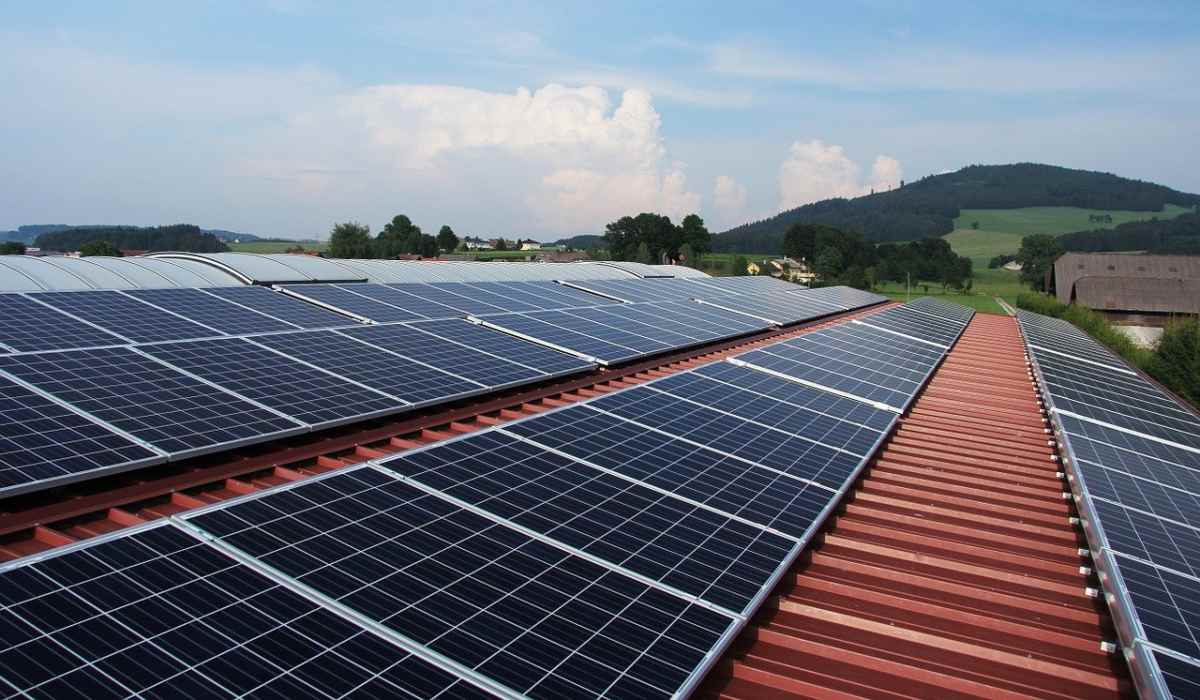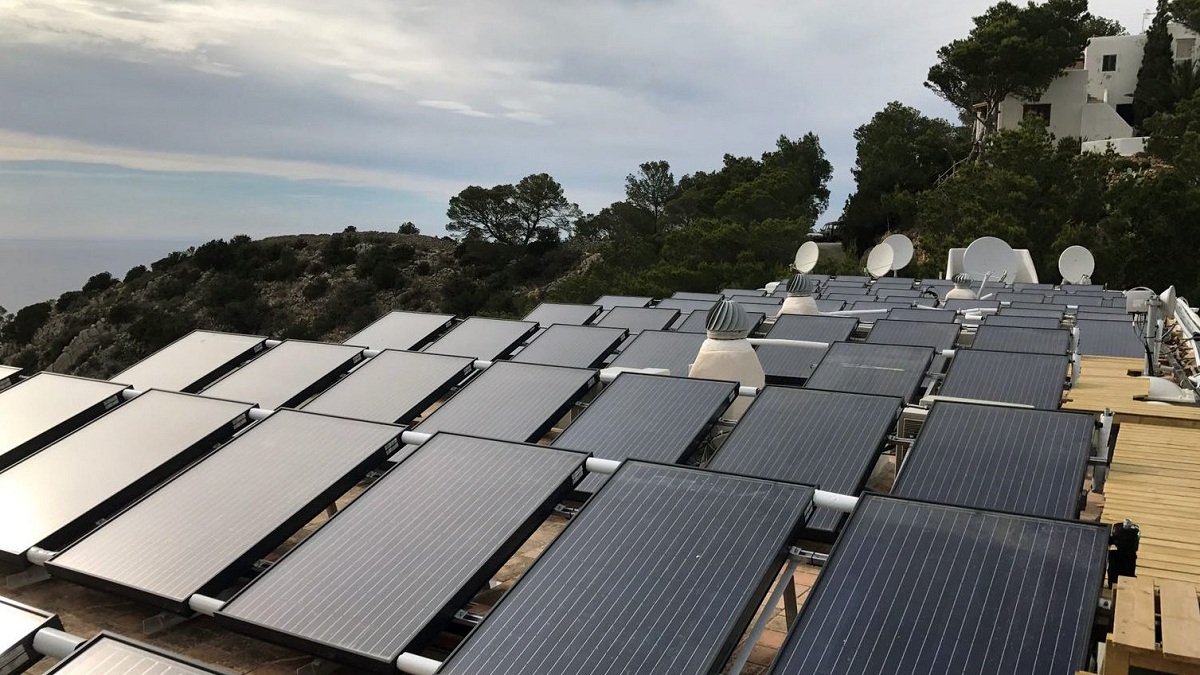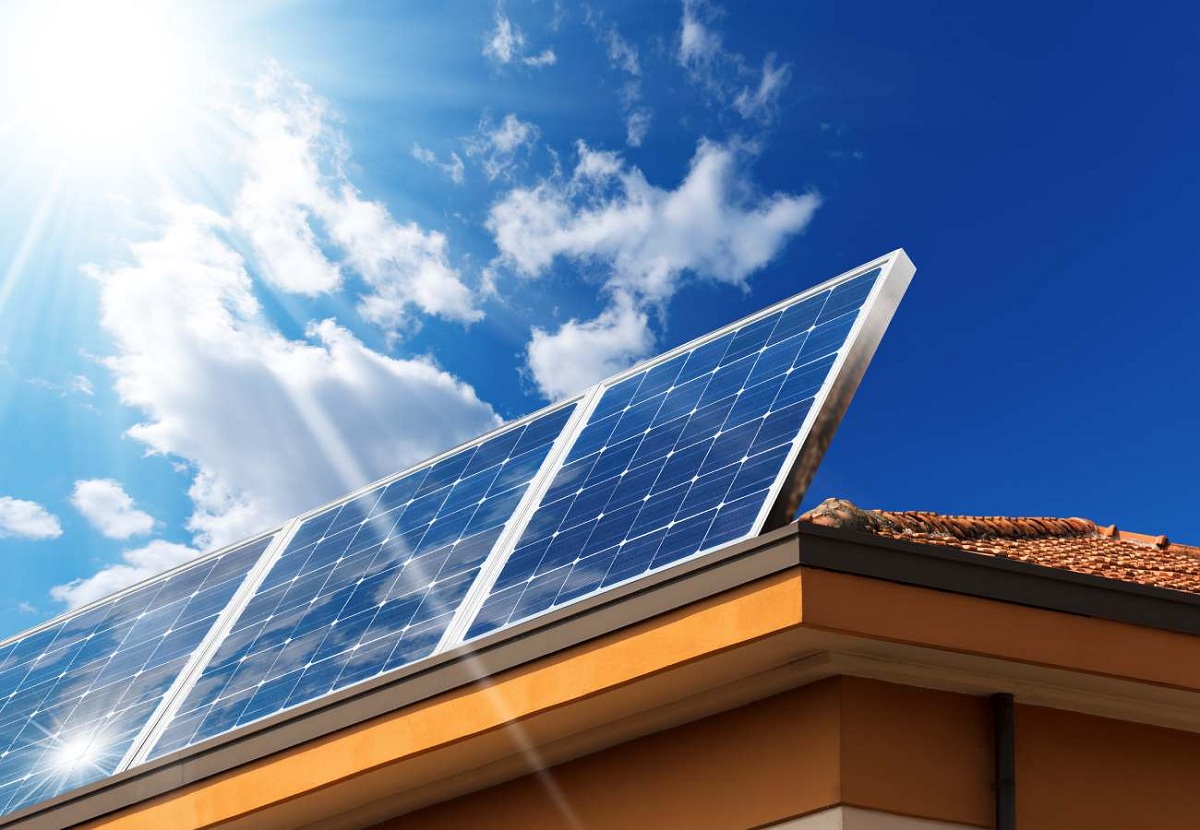
La thermoelectric solar energy o Solar thermal is a technology that uses the sun's heat to generate electricity. This process takes place in so-called solar thermal power plants, or solar thermal power plants, which began to be built in Europe and Japan in the early 80s. The advantage of this energy is that it is clean, abundant and renewable. : Every ten days, the Earth receives from the sun the same amount of energy as all the known reserves of oil, gas and coal. At present, several types of thermoelectric solar power plants coexist. Spain is in an advantageous position in this field, since it has several solar thermal plants and a strong industrial sector, participating in projects all over the world.
In this article we are going to tell you about the characteristics and importance of thermoelectric solar energy.
What is thermoelectric solar energy

A solar thermal power plant works like a thermal power plant, but instead of coal or natural gas, it uses solar energy. The sun's rays are concentrated through mirrors in the receiver, reaching temperatures of up to 1.000 ºC. This heat is used to heat fluids and generate steam, which drives turbines and generates electricity. While the first plants could only operate during the hours of solar radiation, today heat can be stored to produce it at night.
Types of plants

There are currently three main types of solar thermal power plants. Electricity generation is similar, the difference is how the solar energy is concentrated.
Solar thermal tower plant
It uses a set of steerable mirrors, called heliostats, to focus the sun's rays on receivers located on the tower. In the medium term, it is a proven, effective and profitable technology. The first pilot plants of this type were built in Almería (Spain) and Nio (Japan) in 1981. The current challenge is to reduce the construction cost of tower solar thermal power plants.
Parabolic dish or Stirling dish solar thermal power plant
This solar thermal power plant uses a dish-shaped parabolic mirror to focus the sun's rays onto a Stirling engine at the focal point of the parabola, so it is also called central Stirling disk. The accumulated heat raises the temperature of the air, which drives the Stirling engine and turbine to generate electricity. The most famous parabolic dish plant is the one in Mojave (United States).
Parabolic trough solar thermal power plant
These types of plants are the most promising from a commercial point of view. They used a mirror in the form of a parabolic cylinder with a channel along its axis that concentrated the sun's rays. The pipe contains a fluid that is heated and produces steam that drives a turbine. Parabolic trough solar thermal plants operate in Spain and other countries.
The development of thermoelectric solar energy

The fundamentals of solar thermal energy were defined by Augustin Mouchot in 1878, and in the 1980s some experience demonstrated its viability. Until recently, however, solar thermal power has been hampered by three factors:
- The high cost of materials it has started to decline as technology has developed and yields have increased.
- It is impossible to store energy to produce it overnight. This limitation has only recently begun to be overcome by technologies that conserve heat. For example, the Gemasolar plant in Seville uses molten salt to store heat, which is why it has become the first solar thermal power plant capable of supplying energy 24 hours a day.
- Large amounts of solar radiation are required throughout the year, which limits the introduction of this energy in the southernmost regions. However, ambitious projects like Desertec propose setting up factories in regions like the Sahara desert and then sending electricity to Europe.
- Many solar thermal energy projects are currently being developed in countries such as Algeria, Morocco, the United States or Australia. Many had Spanish involved.
Thermoelectric solar energy in Spain
Spain is a world power in solar thermal energy. The country's conditions are ideal for the installation of solar thermal power plants due to its abundant hours of sunshine and its large desert areas. The first pilot plants, called SSPS/CRS and CESA 1, were built in Tabenas (Almería) in 1981 and 1983, respectively.
In 2007, the first commercial PS10 tower solar thermal plant in the world was commissioned in Sanlúcar la Mayor (Seville). In 2011, 21 plants with a capacity of 852,4 MW were in operation and another 40 in project, according to Protermosolar, the Spanish association of the solar thermal industry. When all these new plants come into operation, around 2014, Spain will be the world's leading producer of this promising 100% clean and renewable energy source.
Applications
- Applications: Sanitary hot water, heating, air conditioning and swimming pool heating. In single-family homes it can cover up to 70% of hot water consumption.
- Operation: The thermal plates are responsible for collecting solar radiation and transferring the heat to the fluids that circulate through them.
- Regulations and aid: The Technical Building Code (CTE) approved in 2006 requires the installation of solar panels in all new buildings. State and territory assistance can cover one-third to one-half of installation costs.
- Costs and savings: The average cost of installation for 2 square meters is only about 1.500 euros of hot water. Compared to a natural gas or propane boiler, the energy savings are €150/year, and if fossil fuels and electricity continue to grow, the energy savings will be even greater. Without subsidies, the payback period is about 10 years, with subsidies, it only takes 5 years.
Thermoelectric solar energy also has applications within the home. Let's see what they are:
- Application: Production of electrical energy for domestic use or for resale to the general network.
- Operation: Photovoltaic panels convert solar radiation into electricity.
- Regulations and assistance: Power companies are legally required to purchase grid-integrated photovoltaic power, paying a discount to producers (currently 575% of the price per kilowatt). On the other hand, the technical building codes require the installation of photovoltaic panels in any public or private building of more than 3.000 square meters.
- Costs and savings: For self-supply, the price of a small 5 kW unit is around 35.000 euros. Given that the annual energy consumption of an average home is around 725 euros, the investment is not amortized until after 48 years.
I hope that with this information you can learn more about thermoelectric solar energy and its characteristics.
"Given that the annual energy consumption of an average home is around 725 euros, the investment does not pay for itself until after 48 years." This statement that you make in amortization of a 5Kw equipment seems wrong to me. Thanks